Rick Just's Blog, page 121
July 8, 2021
The Pea Picker Strike
If you know anything at all about peas grown in Idaho, you may know that we have an Idaho Pea and Lentil Commission, that Idahoan Calvin Lamborn perfected sugar snap peas, and that most of Idaho’s pea crop is grown in Nez Perce, Lewis, and Latah counties. But did you know that peas caused the Idaho governor to declare martial law in 1935?
For decades, from about 1925 and into the 1970s, Teton County grew a lot of peas. Peas start to lose their value quickly after they are picked, so a secondary industry popped up in the county: ice harvesting. Peas are picked in August, not a time when ice is widely available, so ice blocks were cut in the winter and stored all summer to keep peas cool in transit after harvest.
Getting peas to market quickly also necessitated the employment of armies of pea pickers. Most were seasonal workers from Mexico. In 1935, some of those workers realized that the farmers might not have the upper hand when it came to wages. They vowed to strike, demanding 85 cents per hundred weight of peas instead of the offered 70 cents. Farmers were over a barrel, because they had to get the crop out fast. So, of course, they caved to the pickers demands.
Just kidding. The farmers called Idaho Governor C. Ben Ross and asked him to declare martial law and send in the Idaho National Guard.
Ross issued the order, sending in 150 armed men from Boise, Buhl, and Twin Falls. Some 2,000 field workers were on strike. The local sheriff blamed “white agitators” for stirring up the Mexican workers.
Workers who didn’t want to toil for the wages offered were told to get out of Idaho. About 100 of the agitators were deported. After a couple of days everyone else went back to work for 70 cents per hundred weight and the harvest—which turned out to be a record crop—was completed.
Martial law has not been declared often in an agricultural emergency in Idaho, but in this one instance the guardsmen solved two ag problems. Coincidentally there was a dispute raging over water between Teton River Basin water users and Snake River Valley users downstream. Drought had made the upper basin farmers stingy with their water. They closed headgates, keeping water in the valley and not letting it flow downstream. Guardsmen, guarding headgates, convinced the Teton water users to open the gates and let the water flow, as downstream users had an established right to it.
So, one more problem solved with a show of force. When the Guard made peace with the pea pickers and the water users, they went back home. Governor Ross said it was all good and went Sagehen hunting.
Two minor footnotes: First, calling out the Idaho National Guard did result in one casualty. A guardsman accidentally shot himself in the knee while disassembling a .45 caliber pistol. Second, using the phrase “pea picker” reminds me that there is one more thing about peas and Idaho that you should know. Tennessee Ernie Ford, "The Ol' Pea-Picker,” spent much of his last years at his cabin near Grandjean, Idaho. Ernie earned that nickname because he often said, "Bless your pea-pickin' heart!"
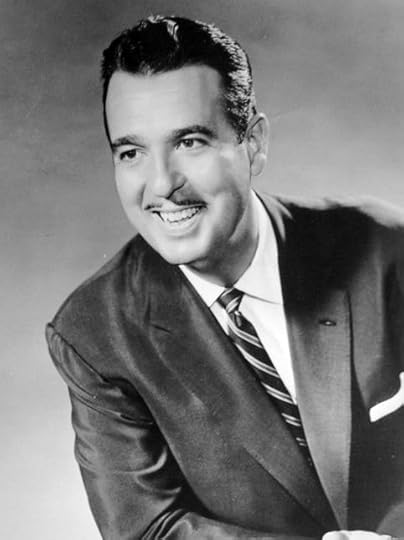 Tennessee Ernie Ford was not one of THOSE pea pickers, but he did have an Idaho connection.
Tennessee Ernie Ford was not one of THOSE pea pickers, but he did have an Idaho connection.
For decades, from about 1925 and into the 1970s, Teton County grew a lot of peas. Peas start to lose their value quickly after they are picked, so a secondary industry popped up in the county: ice harvesting. Peas are picked in August, not a time when ice is widely available, so ice blocks were cut in the winter and stored all summer to keep peas cool in transit after harvest.
Getting peas to market quickly also necessitated the employment of armies of pea pickers. Most were seasonal workers from Mexico. In 1935, some of those workers realized that the farmers might not have the upper hand when it came to wages. They vowed to strike, demanding 85 cents per hundred weight of peas instead of the offered 70 cents. Farmers were over a barrel, because they had to get the crop out fast. So, of course, they caved to the pickers demands.
Just kidding. The farmers called Idaho Governor C. Ben Ross and asked him to declare martial law and send in the Idaho National Guard.
Ross issued the order, sending in 150 armed men from Boise, Buhl, and Twin Falls. Some 2,000 field workers were on strike. The local sheriff blamed “white agitators” for stirring up the Mexican workers.
Workers who didn’t want to toil for the wages offered were told to get out of Idaho. About 100 of the agitators were deported. After a couple of days everyone else went back to work for 70 cents per hundred weight and the harvest—which turned out to be a record crop—was completed.
Martial law has not been declared often in an agricultural emergency in Idaho, but in this one instance the guardsmen solved two ag problems. Coincidentally there was a dispute raging over water between Teton River Basin water users and Snake River Valley users downstream. Drought had made the upper basin farmers stingy with their water. They closed headgates, keeping water in the valley and not letting it flow downstream. Guardsmen, guarding headgates, convinced the Teton water users to open the gates and let the water flow, as downstream users had an established right to it.
So, one more problem solved with a show of force. When the Guard made peace with the pea pickers and the water users, they went back home. Governor Ross said it was all good and went Sagehen hunting.
Two minor footnotes: First, calling out the Idaho National Guard did result in one casualty. A guardsman accidentally shot himself in the knee while disassembling a .45 caliber pistol. Second, using the phrase “pea picker” reminds me that there is one more thing about peas and Idaho that you should know. Tennessee Ernie Ford, "The Ol' Pea-Picker,” spent much of his last years at his cabin near Grandjean, Idaho. Ernie earned that nickname because he often said, "Bless your pea-pickin' heart!"
 Tennessee Ernie Ford was not one of THOSE pea pickers, but he did have an Idaho connection.
Tennessee Ernie Ford was not one of THOSE pea pickers, but he did have an Idaho connection.
Published on July 08, 2021 04:00
July 7, 2021
Having Little to do with Beavers
Do you know what a beaver slide is? If you’re a beaver fan, you’ll probably assume I’m talking about a muddy little path that serves as a quick way to get into the water for your favorite rodent.
The beaver slide I have in mind was once used to stack hay all over the West. It was patented as the Beaver County Slide Stacker in the early 1900s. Invented in the Big Hole Valley in Montana, it’s a somewhat portable device, made of wood, that lets someone with a team of horses pull a big wad of hay up the slide and topple it off onto a stack. Before bailing became the thing to do, loose hay in stacks was a way to store and preserve it. Hay stacked that way can last a couple of years—maybe as many as six years, if conditions are right.
The name was popularly shortened to beaver slide by those who used it. Nowadays you’re more likely to see a roll of hay the size of a Volkswagen than a beaver slide and a loose stack. However, the University of Montana notes that a few ranchers are going back to this method because it saves money and fuel.
The beaver slide in the picture was being run by Nona Virgin on the Railroad Ranch in the Island Park country, probably in the 1920s.
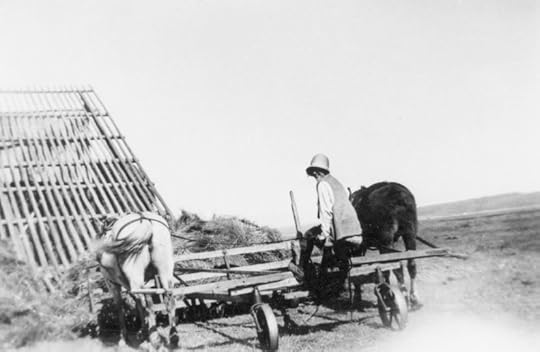
The beaver slide I have in mind was once used to stack hay all over the West. It was patented as the Beaver County Slide Stacker in the early 1900s. Invented in the Big Hole Valley in Montana, it’s a somewhat portable device, made of wood, that lets someone with a team of horses pull a big wad of hay up the slide and topple it off onto a stack. Before bailing became the thing to do, loose hay in stacks was a way to store and preserve it. Hay stacked that way can last a couple of years—maybe as many as six years, if conditions are right.
The name was popularly shortened to beaver slide by those who used it. Nowadays you’re more likely to see a roll of hay the size of a Volkswagen than a beaver slide and a loose stack. However, the University of Montana notes that a few ranchers are going back to this method because it saves money and fuel.
The beaver slide in the picture was being run by Nona Virgin on the Railroad Ranch in the Island Park country, probably in the 1920s.

Published on July 07, 2021 04:00
July 6, 2021
Basque Arboglyphs
My father was an unrepentant creator of arboglyphs. He probably didn’t give it a second thought. It was simply his practice to carve his initials in the bark of quaking aspens from time to time when he was in the hills in the Blackfoot River country of Southeastern Idaho.
He probably knew that Basque sheepherders did the same thing across the southern part of the state. It’s a way to say “I was here.”
The Basques left initials and dates in the tree bark, but often added their hometown, images of churches, and other figures.
The three arboglyph photos shown are in the Basque Museum in Boise, which is well worth the hour you’ll spend there next time you’re in town.

He probably knew that Basque sheepherders did the same thing across the southern part of the state. It’s a way to say “I was here.”
The Basques left initials and dates in the tree bark, but often added their hometown, images of churches, and other figures.
The three arboglyph photos shown are in the Basque Museum in Boise, which is well worth the hour you’ll spend there next time you’re in town.

Published on July 06, 2021 04:00
July 5, 2021
A Billionaire from Blackfoot
How many billionaires have been born in Blackfoot? I’ll wait while you compile the list. Here’s a hint: I was born there. But I’m not on that list.
I can think of only one but correct me if you came up with others.
Jon Huntsman Sr., born in Blackfoot, was a billionaire chemical industrialist, which is an achievement in its own right. But he was also a notoriously generous philanthropist, giving away more than $1.5 billion during his life and founding the Huntsman Cancer Institute at the University of Idaho in 1993, one of America’s major cancer research centers.
Huntsman had a political side. He was the White House Staff Secretary in the Nixon administration. In 1988 he began raising money to run for governor of Utah. He backed out of the race to back Governor Norm Bangerter, saying that party unity was more important to him than a political career.
His son, Jon Huntsman Jr., became governor of Utah in 2005, serving until 2009. Huntsman Jr also served as U.S. Ambassador to China, after an unsuccessful presidential run.
Both Jon Huntsman Sr and Jon Huntsman Jr have extensive Wikipedia pages, should you want to read more.
The billionaire philanthropist was born in Blackfoot, Idaho in 1937. His father, Alonzo Blaine Huntsman was piano teacher. The family moved to Palo Alto, California in 1950 where Alonzo earned an M.A. and Ed.D, later becoming a superintendent of schools.
 Jon Huntsman Sr, courtesy of the Science History Institute.
Jon Huntsman Sr, courtesy of the Science History Institute.
I can think of only one but correct me if you came up with others.
Jon Huntsman Sr., born in Blackfoot, was a billionaire chemical industrialist, which is an achievement in its own right. But he was also a notoriously generous philanthropist, giving away more than $1.5 billion during his life and founding the Huntsman Cancer Institute at the University of Idaho in 1993, one of America’s major cancer research centers.
Huntsman had a political side. He was the White House Staff Secretary in the Nixon administration. In 1988 he began raising money to run for governor of Utah. He backed out of the race to back Governor Norm Bangerter, saying that party unity was more important to him than a political career.
His son, Jon Huntsman Jr., became governor of Utah in 2005, serving until 2009. Huntsman Jr also served as U.S. Ambassador to China, after an unsuccessful presidential run.
Both Jon Huntsman Sr and Jon Huntsman Jr have extensive Wikipedia pages, should you want to read more.
The billionaire philanthropist was born in Blackfoot, Idaho in 1937. His father, Alonzo Blaine Huntsman was piano teacher. The family moved to Palo Alto, California in 1950 where Alonzo earned an M.A. and Ed.D, later becoming a superintendent of schools.
 Jon Huntsman Sr, courtesy of the Science History Institute.
Jon Huntsman Sr, courtesy of the Science History Institute.
Published on July 05, 2021 04:00
July 4, 2021
That Idaho Horse
Idaho is horse country and has been for more than 250 years. Idaho even stakes a claim to a breed of horse, the appaloosa.
The appaloosa horse can be traced back at least to the Mongols in ancient China. It is the oldest identifiable breed of horse. It wasn’t called the appaloosa until it became associated with a place that would become Idaho. There horses were well known on the Palouse prairie of northern Idaho, and over the years those Palouse horses, became appaloosas.
The spotted horses came to the Northwest by way of Mexico. Spanish conquistadors lost or traded away enough of them to assure thriving herds in the new world. The Shoshone Tribe had them first, but it was the Nez Perce who perfected the breed.
Horses gave the Nez Perce a greatly expanded range, and produced a whole new way of living for them. They became buffalo hunters, and developed trade relationships with other tribes far removed from their traditional range.
The appaloosa breed was nearly lost when the great Nez Perce herds were split up and scattered following the Nez Perce War. An ambitious plan to save the horses brought the breed back from near extinction in the 1930s.
Today, thousands of the tough little horses with spotted blankets on their rear quarters can be seen in Idaho and around the world. If you visit Moscow, Idaho, don’t miss the Appaloosa Museum, where you can learn the complete story of the breed that became Idaho’s State Horse in 1975.

The appaloosa horse can be traced back at least to the Mongols in ancient China. It is the oldest identifiable breed of horse. It wasn’t called the appaloosa until it became associated with a place that would become Idaho. There horses were well known on the Palouse prairie of northern Idaho, and over the years those Palouse horses, became appaloosas.
The spotted horses came to the Northwest by way of Mexico. Spanish conquistadors lost or traded away enough of them to assure thriving herds in the new world. The Shoshone Tribe had them first, but it was the Nez Perce who perfected the breed.
Horses gave the Nez Perce a greatly expanded range, and produced a whole new way of living for them. They became buffalo hunters, and developed trade relationships with other tribes far removed from their traditional range.
The appaloosa breed was nearly lost when the great Nez Perce herds were split up and scattered following the Nez Perce War. An ambitious plan to save the horses brought the breed back from near extinction in the 1930s.
Today, thousands of the tough little horses with spotted blankets on their rear quarters can be seen in Idaho and around the world. If you visit Moscow, Idaho, don’t miss the Appaloosa Museum, where you can learn the complete story of the breed that became Idaho’s State Horse in 1975.

Published on July 04, 2021 04:00
July 3, 2021
A Football Hero
Here's a trivia question for you. Where did the man named the outstanding guard in the history of professional football grow up? Idaho, of course, but which town?
Football fans got this one right away. Jerry Kramer, named the outstanding guard in the history of professional football back in 1969, grew up in Sandpoint, Idaho. Kramer attended high school there, then went on to the University of Idaho, where he was a business major and football player.
Kramer was drafted by the Green Bay Packers in the fourth round of the 1958 NFL draft. He became a legendary guard with the team when he blocked Jethro Pugh in a do-or-die effort that allowed Bart Starr to make a winning touchdown and clinch the NFL championship in 1967.
The Packers called on Kramer's versatility in 1962 when their placekicker was injured. Jerry Kramer made nine of eleven field goal attempts and 38 of 39 extra points. Not a bad effort for a fill-in place-kicker.
Before retiring in 1968, Kramer played on five championship teams, was named All-Pro five times, and participated in three Pro Bowls. He played for the Packers in the first two Super Bowls. The team won them both.
Kramer was a member of the NFL's 50th Anniversary All-Time team. For many years he was the only member of that team not in the Pro Football Hall of Fame. He was nominated ten times. Finally, at age 82, he got that well-deserved honor in 2018.
Kramer wrote several books about his football career, including Instant Replay: The Green Bay Diary of Jerry Kramer .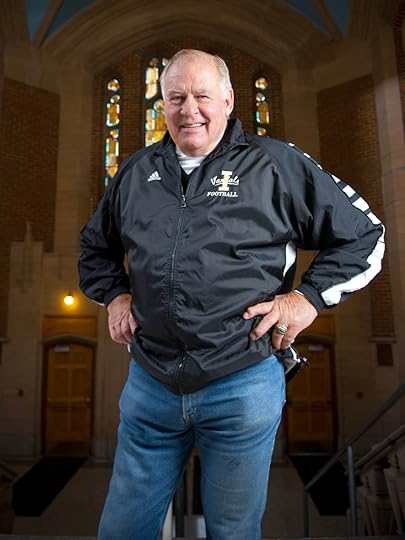
Football fans got this one right away. Jerry Kramer, named the outstanding guard in the history of professional football back in 1969, grew up in Sandpoint, Idaho. Kramer attended high school there, then went on to the University of Idaho, where he was a business major and football player.
Kramer was drafted by the Green Bay Packers in the fourth round of the 1958 NFL draft. He became a legendary guard with the team when he blocked Jethro Pugh in a do-or-die effort that allowed Bart Starr to make a winning touchdown and clinch the NFL championship in 1967.
The Packers called on Kramer's versatility in 1962 when their placekicker was injured. Jerry Kramer made nine of eleven field goal attempts and 38 of 39 extra points. Not a bad effort for a fill-in place-kicker.
Before retiring in 1968, Kramer played on five championship teams, was named All-Pro five times, and participated in three Pro Bowls. He played for the Packers in the first two Super Bowls. The team won them both.
Kramer was a member of the NFL's 50th Anniversary All-Time team. For many years he was the only member of that team not in the Pro Football Hall of Fame. He was nominated ten times. Finally, at age 82, he got that well-deserved honor in 2018.
Kramer wrote several books about his football career, including Instant Replay: The Green Bay Diary of Jerry Kramer .

Published on July 03, 2021 04:00
July 2, 2021
Fake News, Long Before the Internet
Alas, fake news is not new.
Here’s what we know:
In 1831, four Nez Perce arrived in St. Louis seeking a man the tribe had met 25 years earlier, William Clark. What they sought wasn’t entirely clear, because the only person who knew any words in the language of the Nez Perce was Clark, and he didn’t remember much from that long-ago expedition. We also know that a few weeks after their arrival, the two older men, Black Eagle and Speaking Eagle, became ill and died, though not before being baptized by Catholics. Their younger companions stayed the winter and left for home the following spring aboard the steamer Yellowstone on its way up the Missouri River. At some point on that trip, George Catlin painted the surviving men, who were in their 20s. In the Catlin images below that is No Horns on His Head on the left and Rabbit Skin Leggings on the right. No Horns on His Head succumbed to disease on the trip home. Rabbit Skin Leggings may have made it back, or he may have been killed by Blackfeet before reaching home.
Here’s what’s fishy:
FISH TALE ONE. The journey the men made is fuzzily famous, mostly because of two accounts of their visit. The first was given by William Walker and quoted in the March 1, 1833, edition of the Christian Advocate by his friend G.P. Disoway, the secretary of the Methodist Board of Foreign Missions. Walker described meeting three of the Indians in St. Louis, and he told of their overwhelming desire to secure a copy of “a book containing directions of how to conduct themselves” that members of the Corps of Discovery had talked about when they met the Nez Perce. Disoway argued that the Indians were clearly seeking the wisdom of the Bible.
Walker, who allegedly met the Indians, went on to describe them in detail. He said they were “small in size, delicately formed, small hands, and the most exact symmetry throughout, except the head.” The unusual thing about their heads, you see, was that their foreheads had been flattened and sloped radically back in the manner of the Flathead people.
There are several points that make this story difficult to swallow. First, recall that no one knew the language of the Nez Perce so communication of complex concepts would have been difficult. Next, they were Nez Perce, not Flatheads, and the “Flatheads” didn’t practice the head flattening custom in the first place. The rest of Walker’s description was also wrong, as the men were not small and delicate at all. Finally, records show that Walker was not in St. Louis at the time of the visit, so could not have met them.
FISH TALE TWO. An unidentified man supposedly overheard a little speech given by one of the Nez Perce when they left St. Louis. In part, it reads, “I came to you, the Great Father of white men, but with one eye partly opened. I am to return to my people, beyond the mountains of snow, at the setting sun, with both eyes in darkness and both arms broken. I came for teachers and am going back without them. I came to you for the Book of God. You have not led me to it… And I am to return to my people to die in darkness.”
The speech reads like the trumped-up eloquence of a storyteller, not like the words of a young man who could not speak English. Also, if they could make their wishes known so plainly, why didn’t someone just give them a Bible? The question of how they were hoping to read it might come up, but surely Bibles were not in short supply in St. Louis.
Whatever reason the Nez Perce delegation had for seeking William Clark in St. Louis (he didn’t bother to mention the visit in his journals), the myth that grew up around it had an important effect. It triggered the missionary movement to the West, starting with the Spaldings and Whitmans leaving in 1836 to make their missions in Oregon Country (present-day Idaho and Washington State).
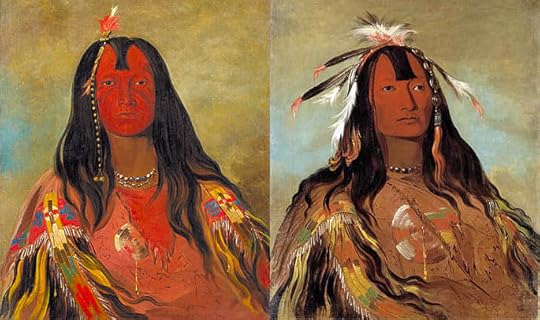
Here’s what we know:
In 1831, four Nez Perce arrived in St. Louis seeking a man the tribe had met 25 years earlier, William Clark. What they sought wasn’t entirely clear, because the only person who knew any words in the language of the Nez Perce was Clark, and he didn’t remember much from that long-ago expedition. We also know that a few weeks after their arrival, the two older men, Black Eagle and Speaking Eagle, became ill and died, though not before being baptized by Catholics. Their younger companions stayed the winter and left for home the following spring aboard the steamer Yellowstone on its way up the Missouri River. At some point on that trip, George Catlin painted the surviving men, who were in their 20s. In the Catlin images below that is No Horns on His Head on the left and Rabbit Skin Leggings on the right. No Horns on His Head succumbed to disease on the trip home. Rabbit Skin Leggings may have made it back, or he may have been killed by Blackfeet before reaching home.
Here’s what’s fishy:
FISH TALE ONE. The journey the men made is fuzzily famous, mostly because of two accounts of their visit. The first was given by William Walker and quoted in the March 1, 1833, edition of the Christian Advocate by his friend G.P. Disoway, the secretary of the Methodist Board of Foreign Missions. Walker described meeting three of the Indians in St. Louis, and he told of their overwhelming desire to secure a copy of “a book containing directions of how to conduct themselves” that members of the Corps of Discovery had talked about when they met the Nez Perce. Disoway argued that the Indians were clearly seeking the wisdom of the Bible.
Walker, who allegedly met the Indians, went on to describe them in detail. He said they were “small in size, delicately formed, small hands, and the most exact symmetry throughout, except the head.” The unusual thing about their heads, you see, was that their foreheads had been flattened and sloped radically back in the manner of the Flathead people.
There are several points that make this story difficult to swallow. First, recall that no one knew the language of the Nez Perce so communication of complex concepts would have been difficult. Next, they were Nez Perce, not Flatheads, and the “Flatheads” didn’t practice the head flattening custom in the first place. The rest of Walker’s description was also wrong, as the men were not small and delicate at all. Finally, records show that Walker was not in St. Louis at the time of the visit, so could not have met them.
FISH TALE TWO. An unidentified man supposedly overheard a little speech given by one of the Nez Perce when they left St. Louis. In part, it reads, “I came to you, the Great Father of white men, but with one eye partly opened. I am to return to my people, beyond the mountains of snow, at the setting sun, with both eyes in darkness and both arms broken. I came for teachers and am going back without them. I came to you for the Book of God. You have not led me to it… And I am to return to my people to die in darkness.”
The speech reads like the trumped-up eloquence of a storyteller, not like the words of a young man who could not speak English. Also, if they could make their wishes known so plainly, why didn’t someone just give them a Bible? The question of how they were hoping to read it might come up, but surely Bibles were not in short supply in St. Louis.
Whatever reason the Nez Perce delegation had for seeking William Clark in St. Louis (he didn’t bother to mention the visit in his journals), the myth that grew up around it had an important effect. It triggered the missionary movement to the West, starting with the Spaldings and Whitmans leaving in 1836 to make their missions in Oregon Country (present-day Idaho and Washington State).

Published on July 02, 2021 04:00
July 1, 2021
Our First Territorial Governor
William H. Wallace was Idaho’s first territorial governor and first congressional delegate. He had previously been Washington Territory’s delegate and territorial governor, so he had some experience under his belt. He also had a high-level friend, President Abraham Lincoln, whom he had known since the early 1850s.
Lincoln appointed Wallace governor while he was in Washington, DC representing Washington Territory. Wallace struck out for the new territory the fastest way possible, which was a 7,000-mile journey by sea and across the Isthmus of Panama. He arrived in Lewiston, the territorial capital, on July 23, 1863. He called the Territorial Legislature together in October, and one of their first decisions was to send Wallace back to Washington, DC, this time as the territorial delegate from Idaho.
He was serving there when on Monday, April 10, 1865, President Lincoln invited he and Mrs. Wallace to attend a performance at Ford Theatre the following Friday evening. For reasons unknown, Wallace declined the invitation. Lincoln was set to reappoint Wallace as territorial governor of Idaho, but that plan was dashed when the president was shot at the theatre. Wallace became one of Lincoln’s pallbearers.
I delight in telling the often-unimportant trivia associated with a story that sometimes makes it simmer if not sizzle, so will throw one in here that matters not a whit. Okay, this time, more than one:
1. William Wallace’s brother, David Wallace, served as governor of Indiana.
2. David Wallace’s son (and William Wallace’s nephew) Lew Wallace served as second in command of the court-martial of Lincoln assassination conspirators.
3. Lew Wallace did a sketch of those on trial and later did a well-known painting based on the sketch called The Conspirators.
4. Oh, and Lew Wallace wrote the novel Ben Hur .
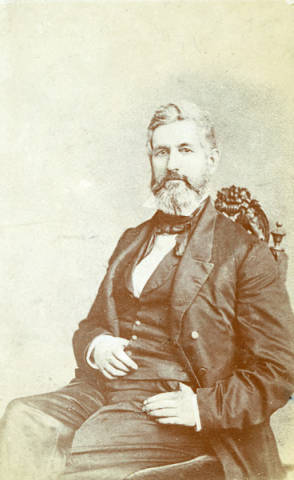
Lincoln appointed Wallace governor while he was in Washington, DC representing Washington Territory. Wallace struck out for the new territory the fastest way possible, which was a 7,000-mile journey by sea and across the Isthmus of Panama. He arrived in Lewiston, the territorial capital, on July 23, 1863. He called the Territorial Legislature together in October, and one of their first decisions was to send Wallace back to Washington, DC, this time as the territorial delegate from Idaho.
He was serving there when on Monday, April 10, 1865, President Lincoln invited he and Mrs. Wallace to attend a performance at Ford Theatre the following Friday evening. For reasons unknown, Wallace declined the invitation. Lincoln was set to reappoint Wallace as territorial governor of Idaho, but that plan was dashed when the president was shot at the theatre. Wallace became one of Lincoln’s pallbearers.
I delight in telling the often-unimportant trivia associated with a story that sometimes makes it simmer if not sizzle, so will throw one in here that matters not a whit. Okay, this time, more than one:
1. William Wallace’s brother, David Wallace, served as governor of Indiana.
2. David Wallace’s son (and William Wallace’s nephew) Lew Wallace served as second in command of the court-martial of Lincoln assassination conspirators.
3. Lew Wallace did a sketch of those on trial and later did a well-known painting based on the sketch called The Conspirators.
4. Oh, and Lew Wallace wrote the novel Ben Hur .

Published on July 01, 2021 04:00
June 30, 2021
Pop Quiz!
Below is a little Idaho trivia quiz. If you’ve been following Speaking of Idaho, you might do very well. Caution, it is my job to throw you off the scent. Answers below the picture. If you missed that story, click the letter for a link.
1). Which is NOT true about the tamarack?
A. Its wood can't be used for concrete forms.
B. It is a deciduous pine tree.
C. Its wood is good for making utility poles
D. Tamarack is the Algonquian name for the species and means "wood used for snowshoes."
E. It grows only above 7,500 feet.
2). John Gideon is remembered for an incident he was involved in with a train. What was it?
A. He fell asleep at a switch causing a head-on collision between two trains
B. He was the engineer of a train involved in a head-on collision
C. He robbed a mail train just outside of Moscow
D. He stole a switch engine to break out of prison
E. He towed a locomotive 100 feet, gripping the line with his teeth
3). What happened to Daryl Grigg on June 5, 1976?
A. He caught a record trout
B. He caught a record sturgeon
C. He caught a record bass
D. He caught a record salmon
E. He survived the flood caused by Teton Dam collapse by clinging to a tree.
4).What connection with did actor Buddy Ebsen have with Pocatello?
A. He was born there
B. He was the executive officer on the USS Pocatello during WWII.
C. He was a descendant of Chief Pocatello
D. He went to school at ISU
E. None of the above
5) Where was the Liberty Bell on July 13, 1915?
A. Moscow, Idaho
B. Coeur d’Alene, Idaho
C. Lewiston, Idaho
D. Boise, Idaho
E. Philadelphia, Pennsylvania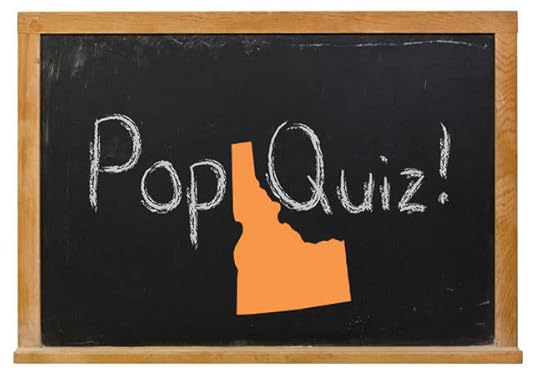 E Answers (If you missed that story, click the letter for a link)
E Answers (If you missed that story, click the letter for a link)
1, E
2, D
3, E
4, B
5, D
How did you do?
5 right—Why aren’t you writing this blog?
4 right—A true Idaho native, no matter where you’re from.
3 right—Good! Treat yourself to some French fries.
2 right—Okay! Eat more potatoes!
1 right—Meh. You need to read more blog posts.
0 right—Really, you should reconsider your recent relocation.
1). Which is NOT true about the tamarack?
A. Its wood can't be used for concrete forms.
B. It is a deciduous pine tree.
C. Its wood is good for making utility poles
D. Tamarack is the Algonquian name for the species and means "wood used for snowshoes."
E. It grows only above 7,500 feet.
2). John Gideon is remembered for an incident he was involved in with a train. What was it?
A. He fell asleep at a switch causing a head-on collision between two trains
B. He was the engineer of a train involved in a head-on collision
C. He robbed a mail train just outside of Moscow
D. He stole a switch engine to break out of prison
E. He towed a locomotive 100 feet, gripping the line with his teeth
3). What happened to Daryl Grigg on June 5, 1976?
A. He caught a record trout
B. He caught a record sturgeon
C. He caught a record bass
D. He caught a record salmon
E. He survived the flood caused by Teton Dam collapse by clinging to a tree.
4).What connection with did actor Buddy Ebsen have with Pocatello?
A. He was born there
B. He was the executive officer on the USS Pocatello during WWII.
C. He was a descendant of Chief Pocatello
D. He went to school at ISU
E. None of the above
5) Where was the Liberty Bell on July 13, 1915?
A. Moscow, Idaho
B. Coeur d’Alene, Idaho
C. Lewiston, Idaho
D. Boise, Idaho
E. Philadelphia, Pennsylvania
 E Answers (If you missed that story, click the letter for a link)
E Answers (If you missed that story, click the letter for a link)1, E
2, D
3, E
4, B
5, D
How did you do?
5 right—Why aren’t you writing this blog?
4 right—A true Idaho native, no matter where you’re from.
3 right—Good! Treat yourself to some French fries.
2 right—Okay! Eat more potatoes!
1 right—Meh. You need to read more blog posts.
0 right—Really, you should reconsider your recent relocation.
Published on June 30, 2021 04:00
June 29, 2021
Farragut Stamps
In the words of then governor Robert E. Smylie in announcing the selection of Farragut State Park for the event, the 1967 World Boy Scout Jamboree was “the biggest planned event in Idaho’s history.” More than 12,000 scouts attended. One of many efforts to recognize the Jamboree was the issuance of stamps in several countries, shown in the photo.
Big as the World Jamboree was, the National Boy Scout Jamboree, held two years later at Farragut, drew about 35,000.
The Farragut Jamboree was the first World Jamboree held in the United States. The second was held at Glen Jean, West Virginia in 2019.
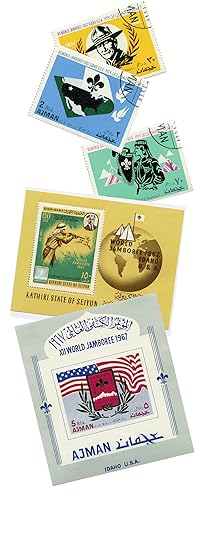
Big as the World Jamboree was, the National Boy Scout Jamboree, held two years later at Farragut, drew about 35,000.
The Farragut Jamboree was the first World Jamboree held in the United States. The second was held at Glen Jean, West Virginia in 2019.

Published on June 29, 2021 04:00



